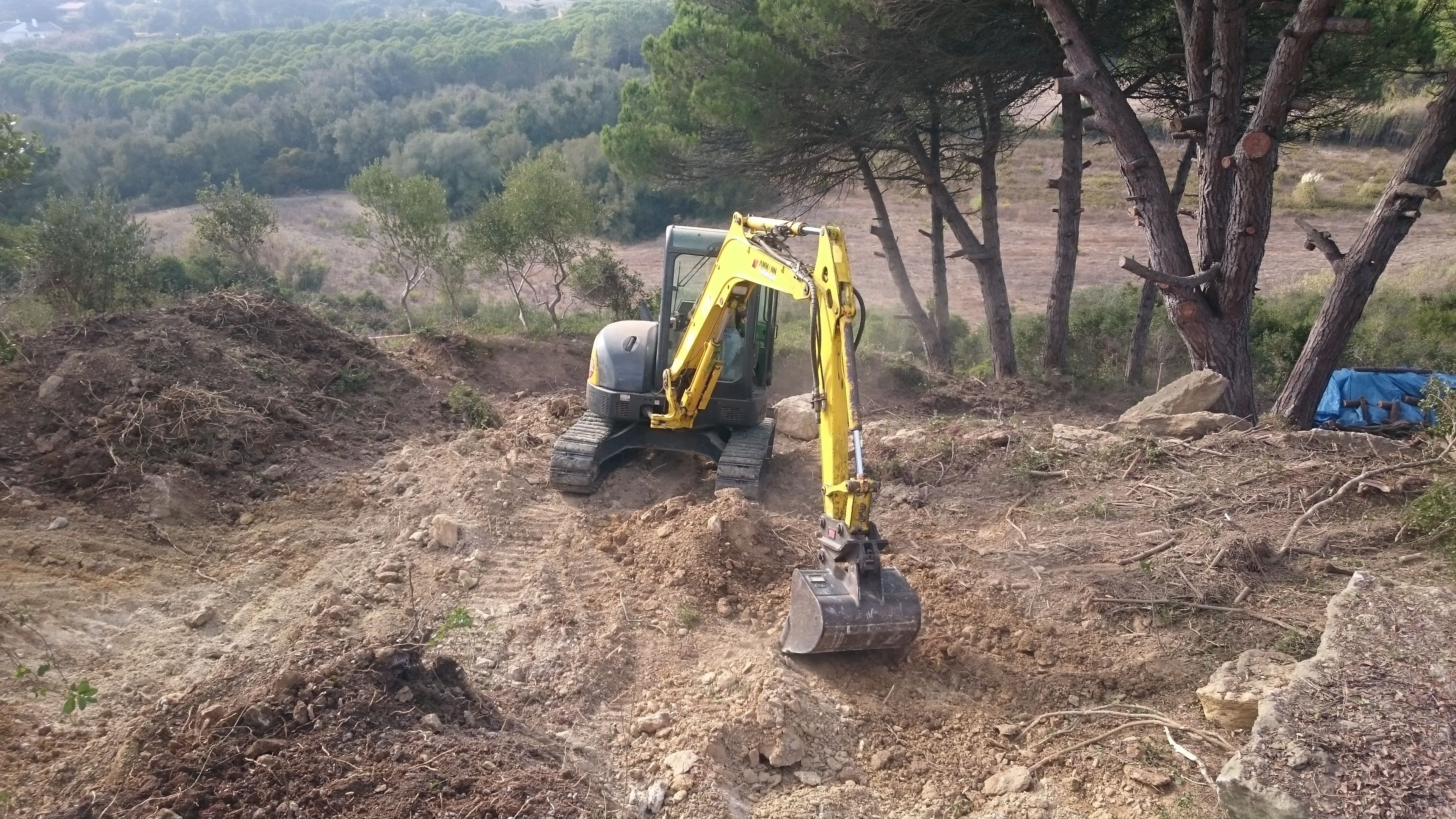
Today I want to share our biggest Permaculture intervention so far. I will talk about our Permaculture earthworks which were our very first action on our „virgin“ property. The land was heavily degraded in a very destinct area of about 400m2 (4300 square feet). That area was part of an offcial Motocross track for a decade, before the wider landscape we live in was declared to be a nature reserve. Ever since the heavily compacted track was sporadically used by weekend drivers and eroding heavily with every rain rushing down the steep track.
As we bought the land we knew from the beginning that we would have to heal this portion of the landscape and kept all our enthusiasm of rushed plantings back for a whole year, as the main permaculture priorities when developing a piece of land clearly state: 1st Water, 2nd Acess, 3rd Structures. You simply don‘t want to pop hundrets of plants or trees into the ground, just to find yourself painfully removing those plants later on, because you found out that their positioning collides with a pond / swale / drain / path / road / fence / barn or house (and so on) that you did not anticipate in the beginning.
Terrace / Retaining Wall.
So here I was in my 7 month PDC course in 2017 slowly filling my brain with all the amazing informations about how to sustainably design a resillient piece of land and had to wait till the end of that course and after my final design exercise to correctly know where all these measures of healing the landscapes motocross wound would be positioned and how they would interact. We are talking about: Terrace / Retaining Rall, Pocket Pond, Spillway, V-drain for erosion control, Silt Trap, Uphill Water Catchemt and Soil Decompaction. All on a quite strongly sloped hillside where I did pay a lot of attention to not create new problems with modified runoff.
Here are some details of my planning process. CAD software and lots of detailed sacled hand drawings where involved to figure this out. The retaining wall you will see further down is marked red in the pencil sketch on the right.

I finally got started with a local excavator operator in mid October 2017 after having layed out the roughest measurements on site. It was a very exciting 3 day experience and the first earthworks I ever planned and conducted.
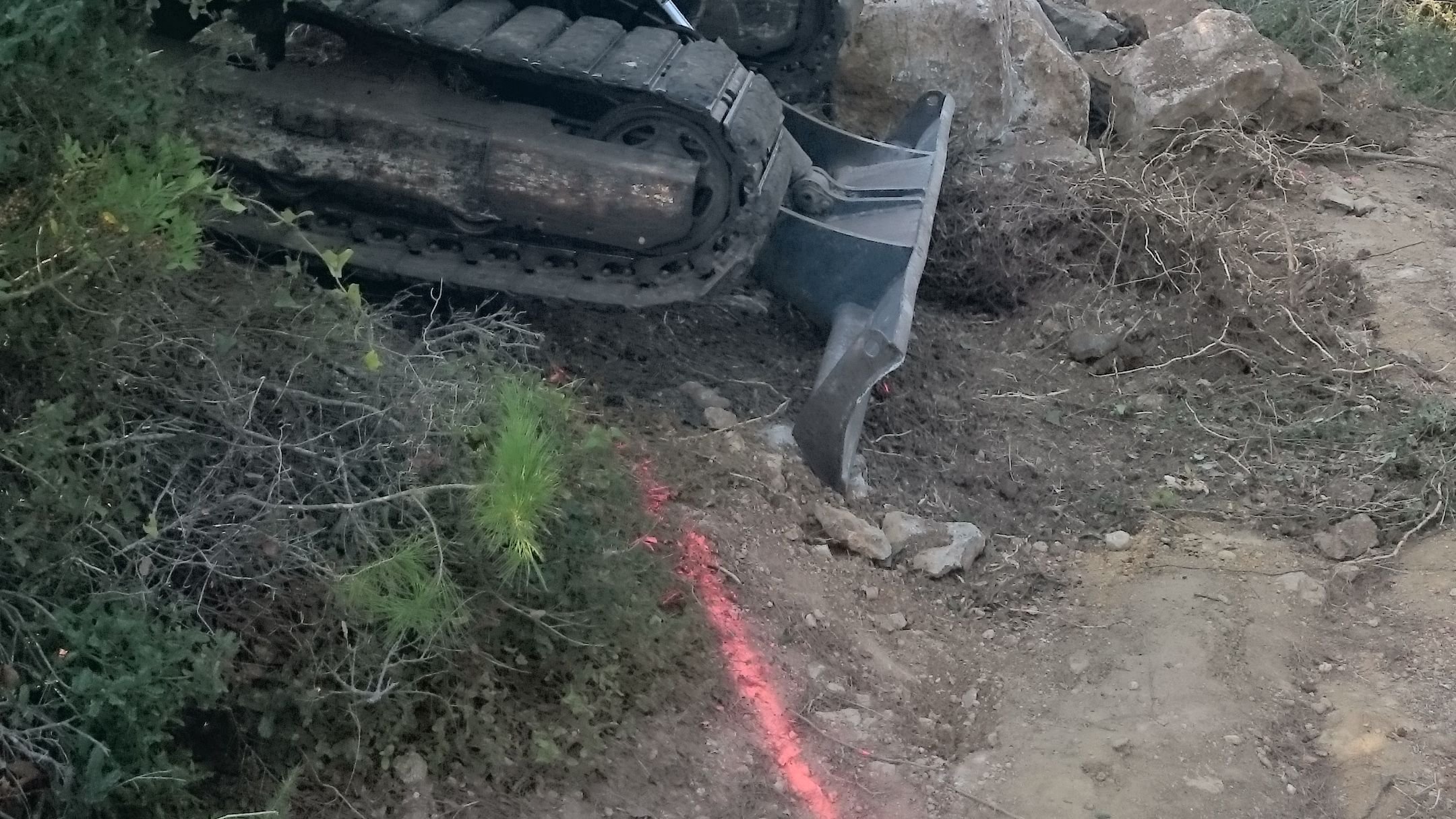
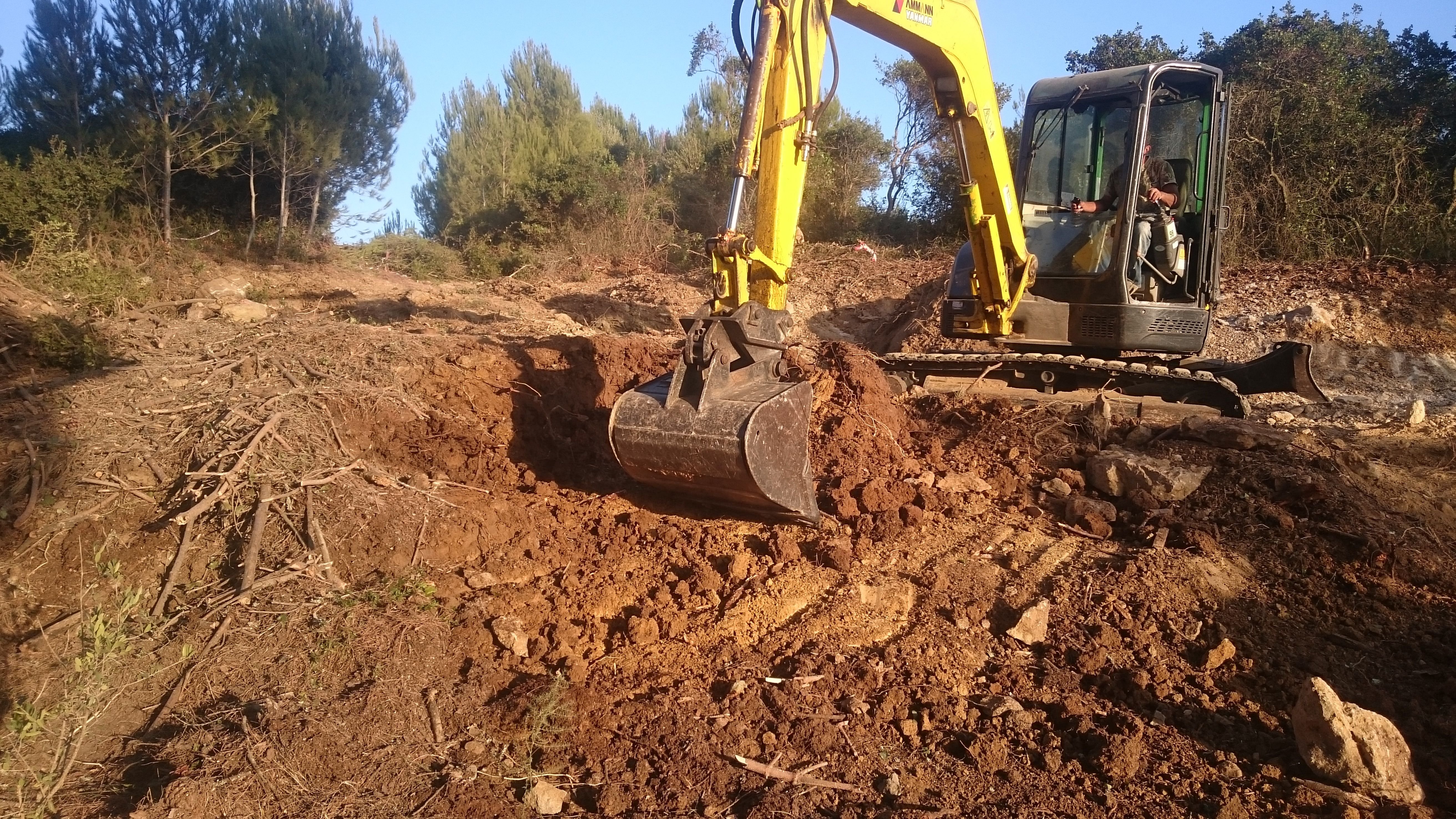
The driver started with the back cut for the terrace and leveled the lower portions of the slope with the diggings to have better ground for navigation. Before any work I kindly asked him to always take off the dark top soil and save it aside, which made it possible to cover all earthworks with dark topsoil again after we where done with the 3 day project.
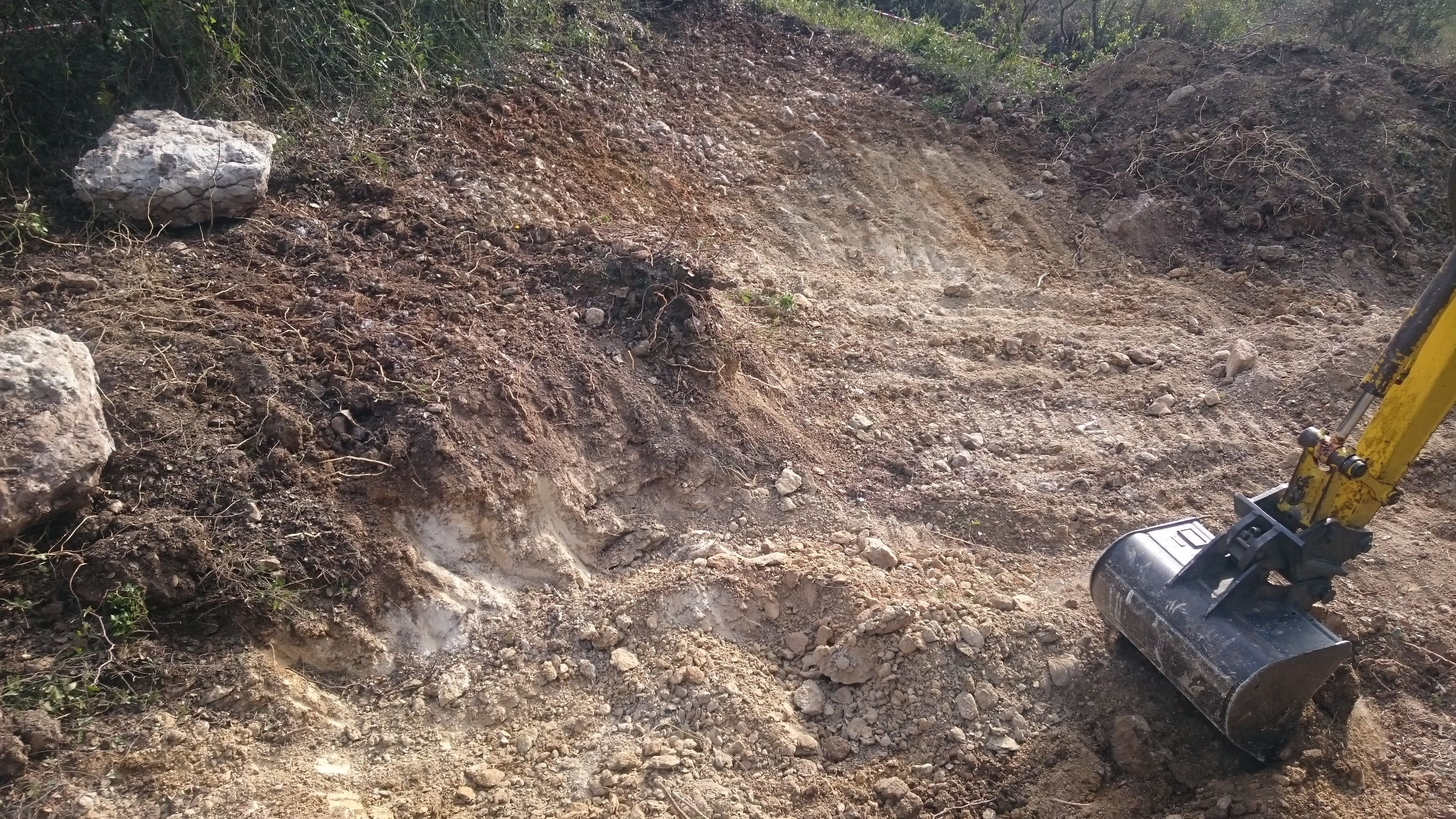

After the rough forming of the terrace the driver palced big bolders on the lower end of it and backfilled the gap with more diggings. The wall holding the new terrace was also extenden to heal the bare roots of a massive stone pine, which where excavated when the track was built. All stone was obtained from on site. Eather from the original moto cross track, where they dumped the bolders on the side of the track, or the stones where excavated by my incredibly gifted excavator driver whithin the work process.
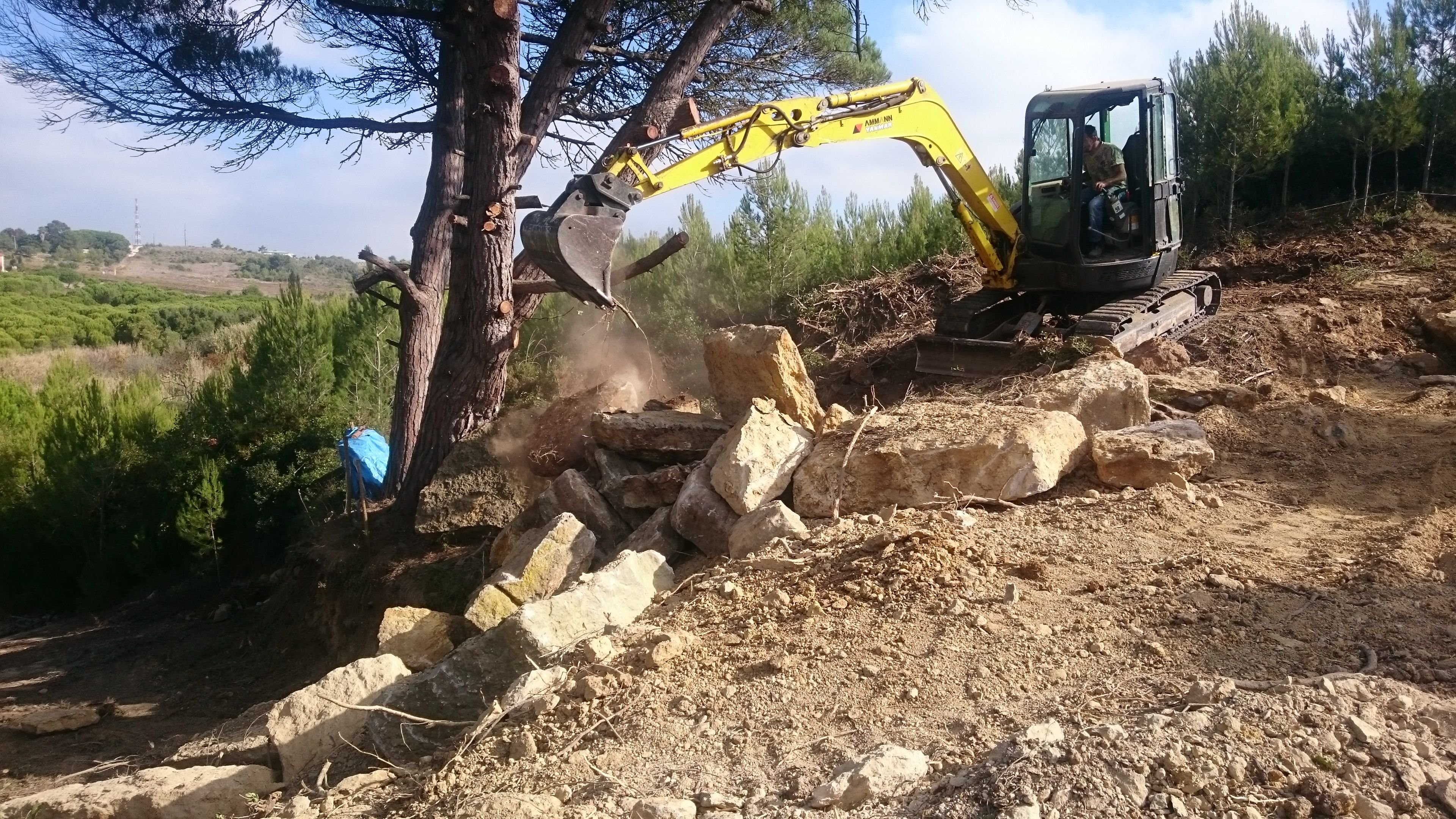
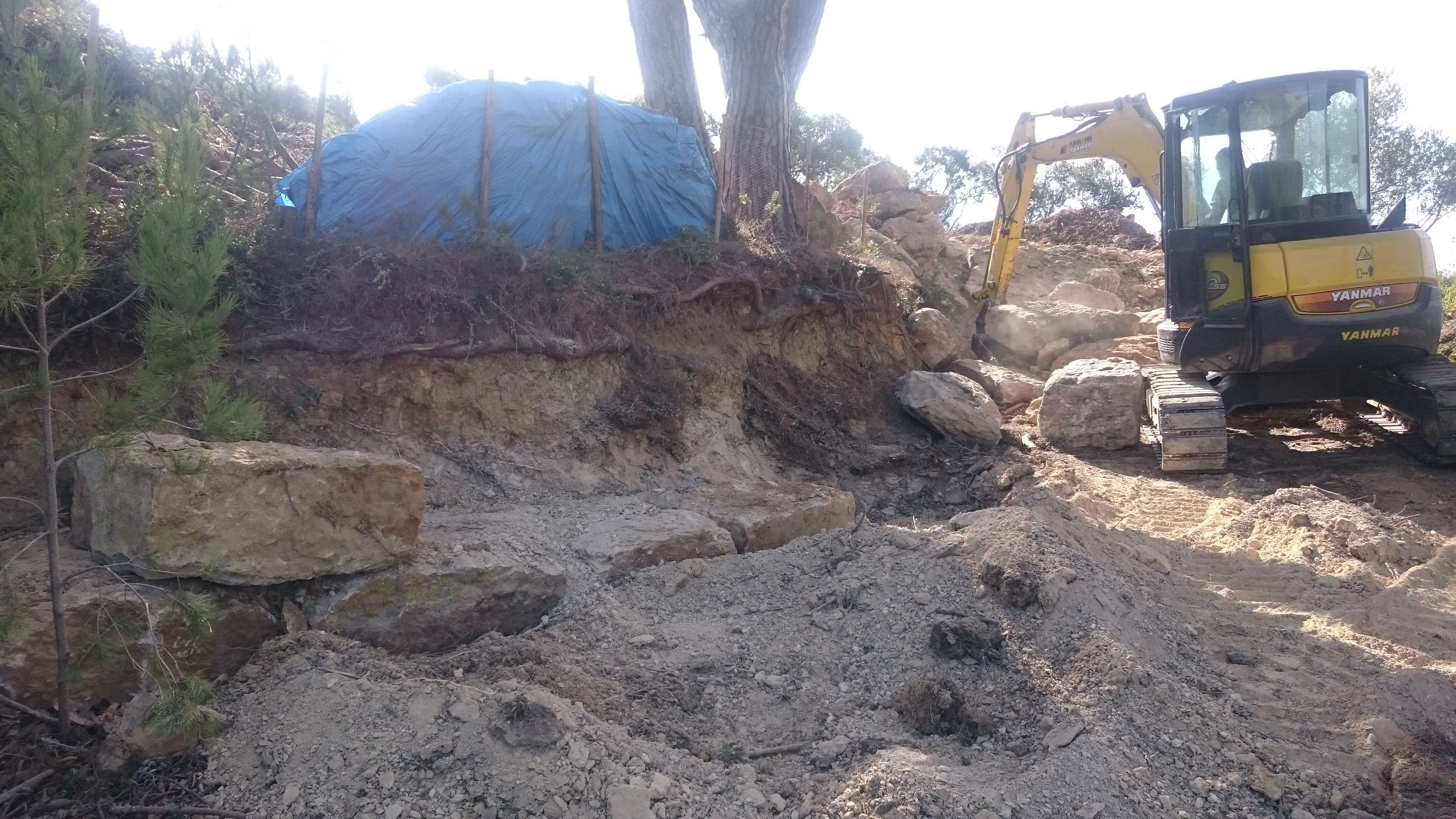
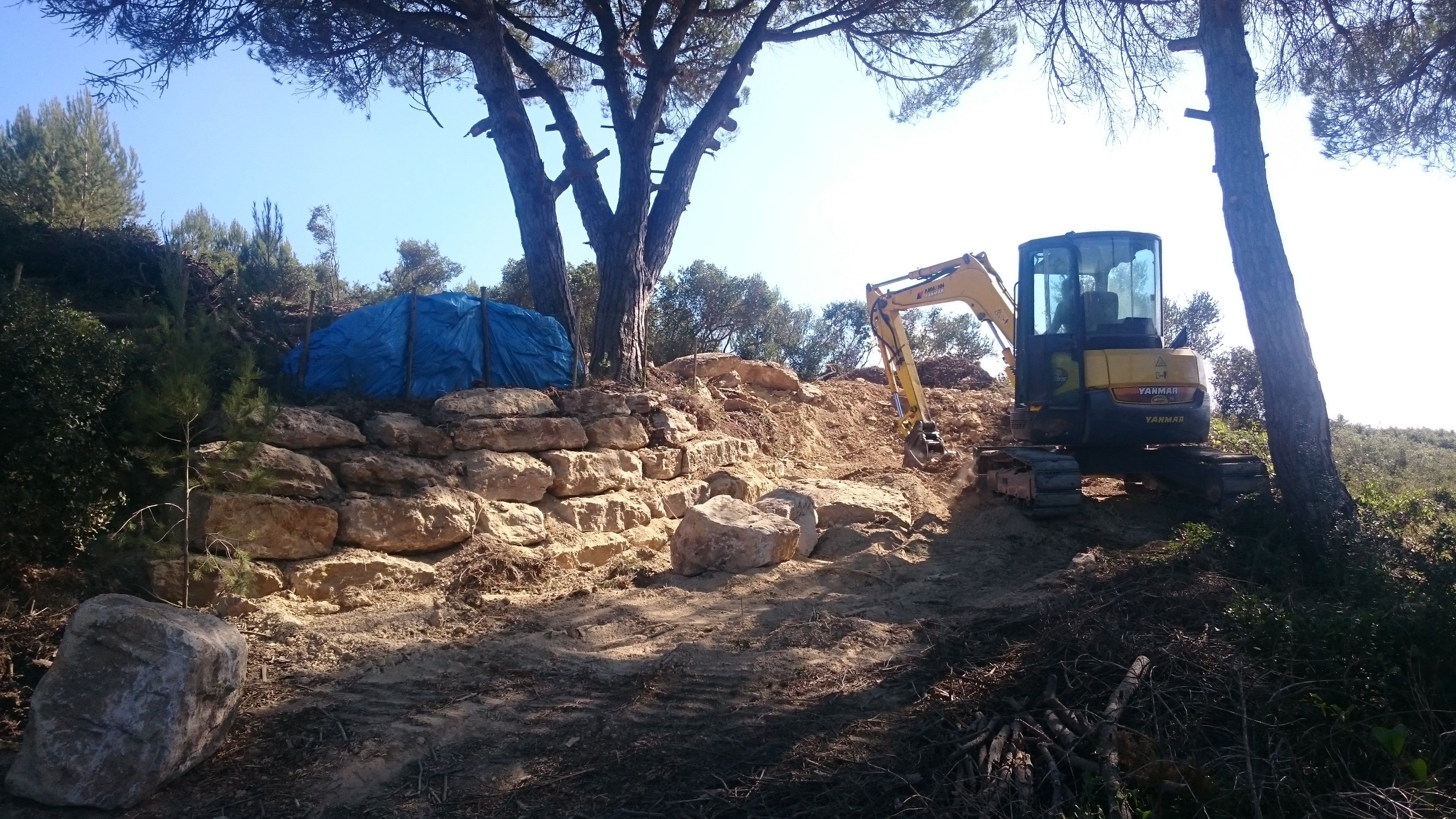
I felt confident, yet I was afraight that someone would tell on us, as what we did was without permit. I tried to get a different permit before here in Portugal, and it took 3 month whithout any help to just reveal more questionmarks from the authorities side without any clear answers. So this time we decided to better ask for forgiveness afterwards than for permission before. All we did was erosioncontrol and lamdscape healing anyways and we asked opur serves: "Who would be upset with us healing the landscape that is nature reserved?"
Here are the final photos of the retention wall and the terrace. The lower parts of the track where just loosened from heavy compaction and topdressed with some rich topsoil we had in excess.
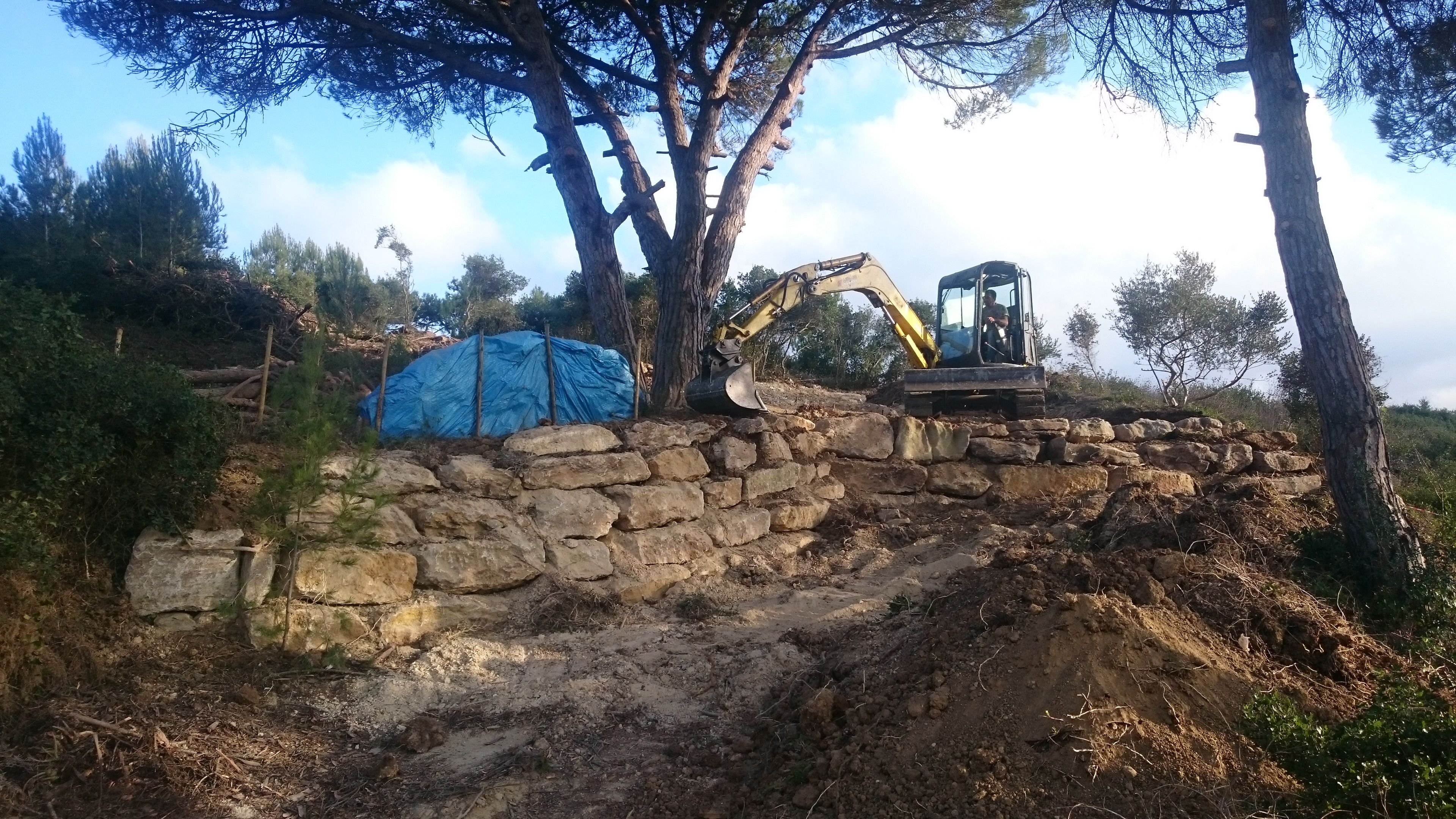
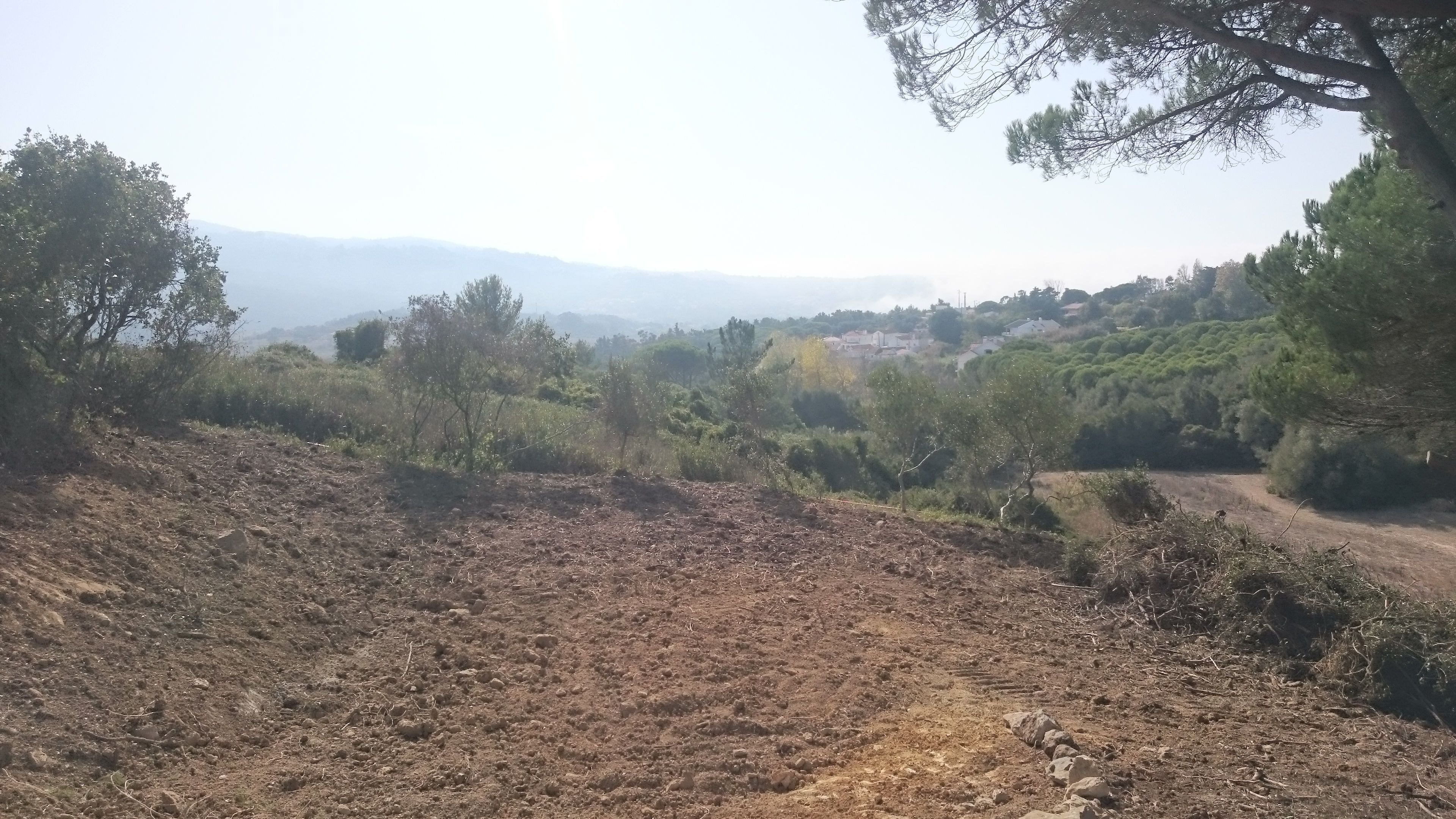
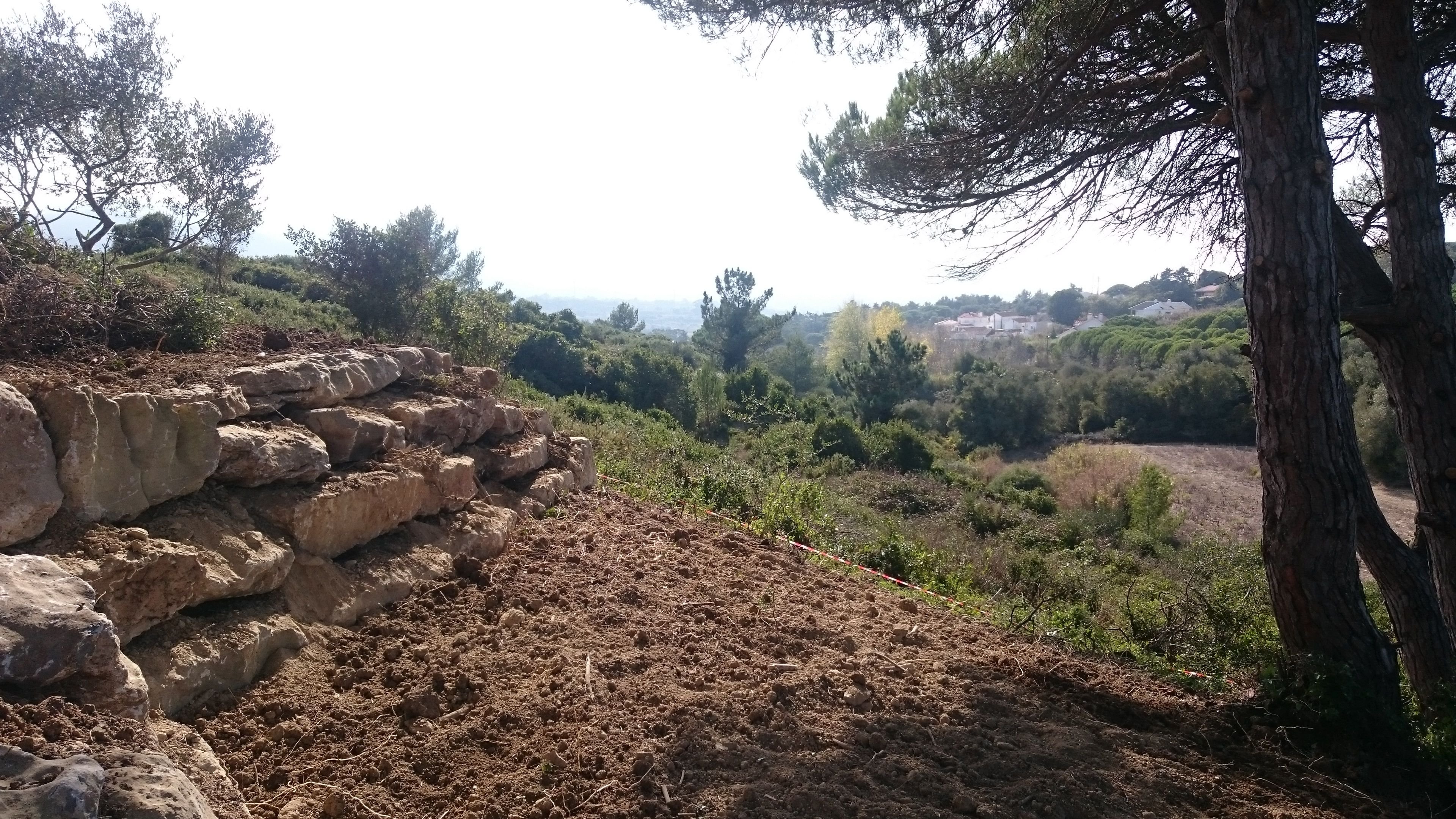
The Pond
While the work for the terrace was on the way I was constantly jumping in the freshly excavated soil and checking the structure of it. A wide variatey of soil structures was revealed during the three days.
The one I was the most exciting about was the high clay content of this one. Check out the traces of the excavator buclet. This shini, almost polished surface hint for very good water holding qualities for ponds!
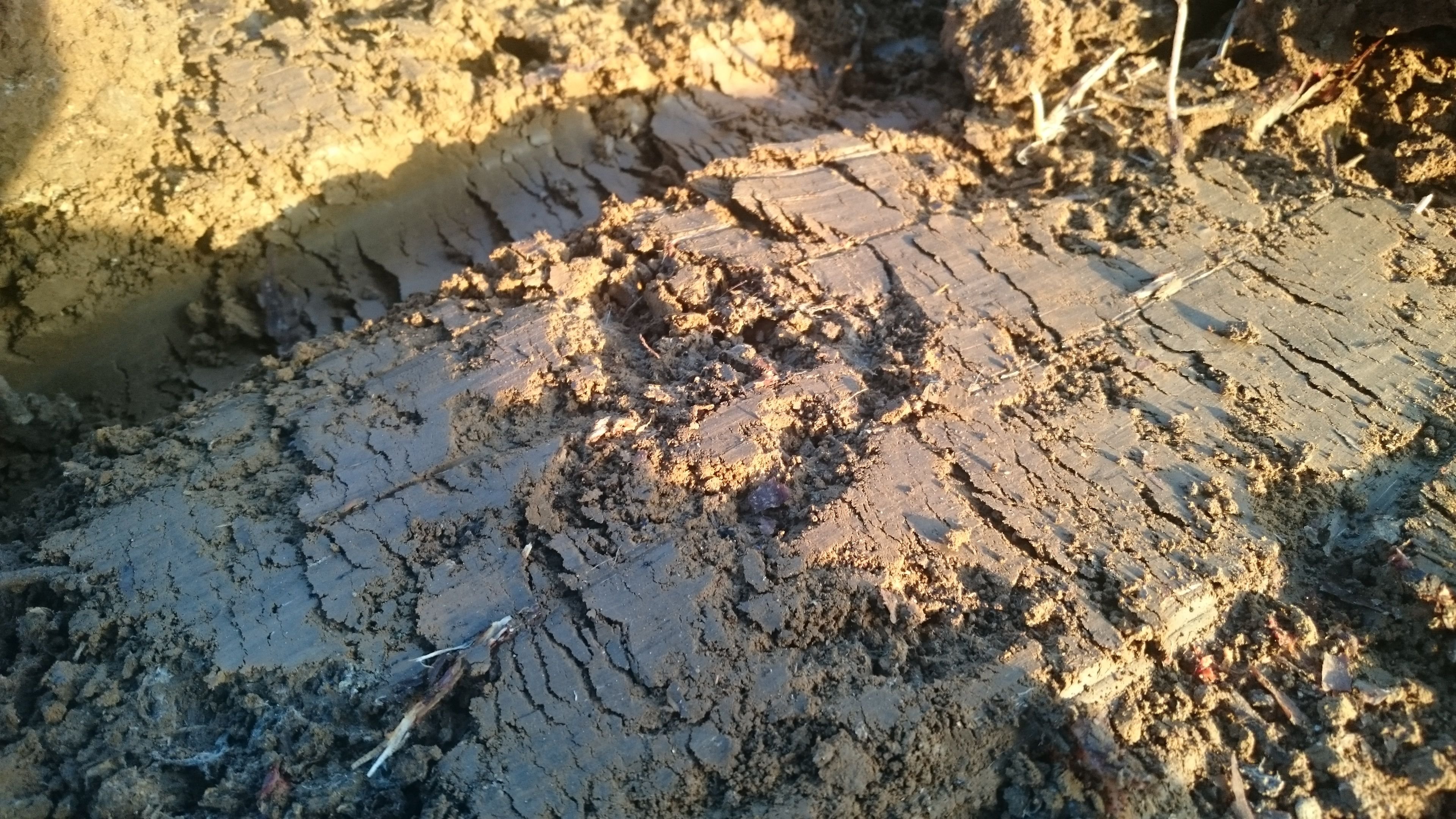
After having finished the terrace I marked out the pond in relation to slope, to the incoming water catchment, the V drain that would bring that water into the pond and the silt trap that had to be installed before the water actually entered the pond. But sadly while digging the pond we crossed the good clay layer and entered this powdery white soil layer, which will most likely not seal. It felt like soft as humid ash while digging and did not hold good after compacting it in my fist.
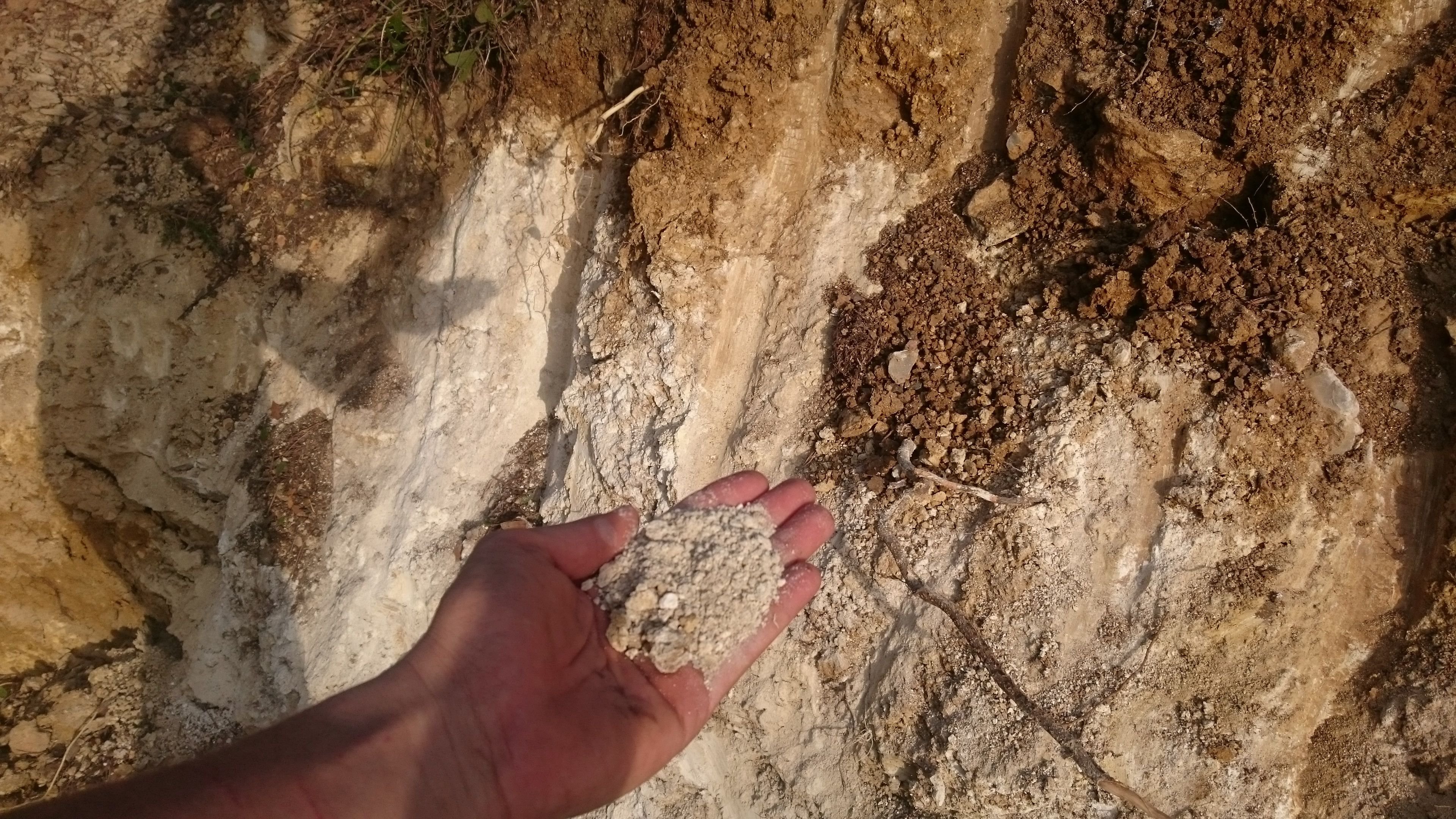
So here is the pond after the first rain. You see the silt trap fills well, yet the pond does not hold water. The longest period was 5 hours after a heavy rain, where the pond filled about 25 cm, so at the moment it is more like an infiltration pond, which is also functional in our dry mediterranean climate. The more water we can bring into the ground before runnof, the better. I guess I will this pocket pond some more time, maybe the subsoil will saturate and swell, we will see. If the situation will not change I am thinking of turning it into a water infiltrating mulch pit to grow tropicals, but therefore i would need to grow a windbreak and sun trap on the north side. The future will show us the answer to this riddle.
Sorry for this getting a bit lenghty, but as always thank you for listening!
Moritz
